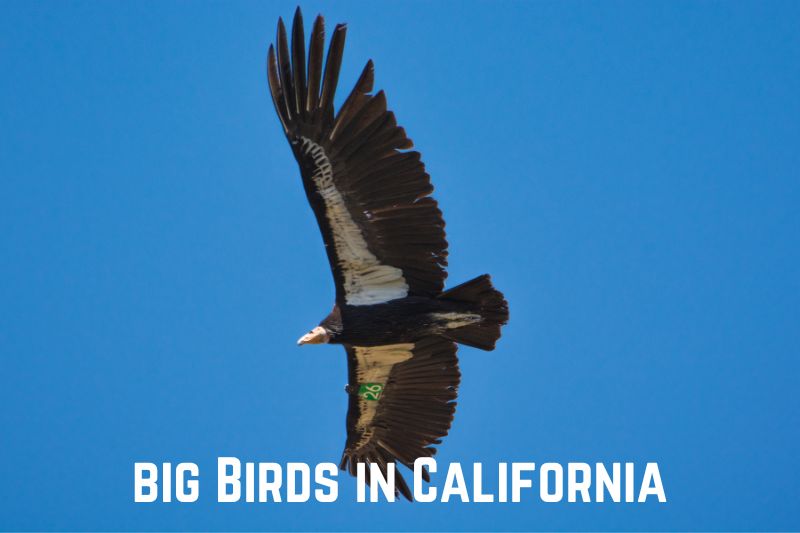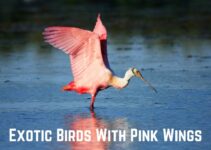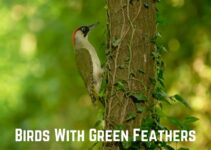If you’re a bird enthusiast, you’ll be happy to know that California is home to a wide variety of birds, including several large species. In this article, we’ll be discussing 12 of the biggest birds found in California, including their unique features and habitats.
From the majestic California Condor to the colorful Wood Duck, California’s big birds are a sight to behold. Whether you’re a seasoned birdwatcher or just starting out, this article will provide you with valuable information about some of the most impressive birds in the state.
Read: 17 Types of Herbivorous Birds Across The World (+ Pics)
Contents
List of 12 Big Birds in California
1. California Condor
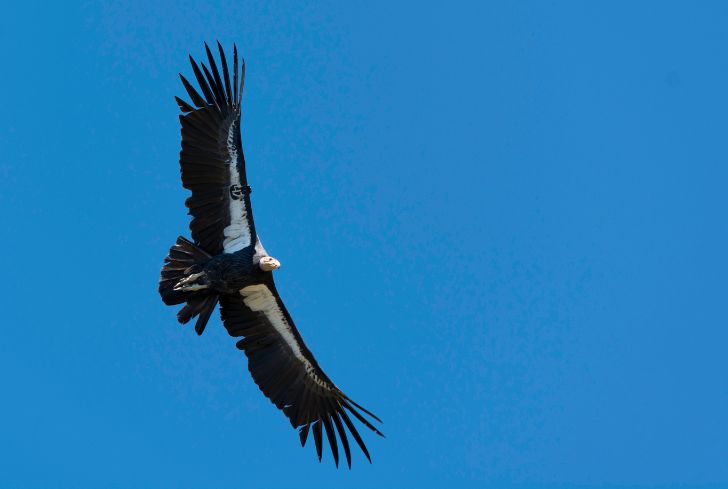
The California Condor is a critically endangered species of bird that is native to California. It is one of the largest flying birds in the world and has a wingspan of up to 10 feet. The California Condor is a scavenger and feeds primarily on carrion, which includes dead animals such as deer, elk, and cattle.
The California Condor was once on the verge of extinction, with only 27 individuals remaining in the wild in the 1980s. However, through a successful captive breeding program, the population has increased to over 400 individuals today. The California Condor is still considered critically endangered, but its population is slowly recovering.
The California Condor is an important symbol of conservation efforts in California and serves as a reminder of the importance of protecting our natural resources. Efforts are ongoing to protect and conserve the California Condor, including habitat restoration, captive breeding programs, and public education.
2. American White Pelican

The American White Pelican is a large bird with a wingspan of up to 9 feet. They are easily recognizable because of their white feathers and long, curved beaks. These birds are found in large numbers in California during the breeding season, which is from March to September.
During the breeding season, American White Pelicans gather in large colonies on islands in lakes and rivers. They build their nests on the ground and lay 1-3 eggs. Both parents take turns incubating the eggs and caring for the chicks.
American White Pelicans are primarily fish-eaters and they use their large beaks to scoop up fish from the water. They also eat crustaceans and other aquatic animals. These birds are known for their unique feeding behavior called “cooperative fishing.” They swim in a group and use their wings to corral fish into shallow water where they can easily catch them.
| Scientific Name | Pelecanus erythrorhynchos |
|---|---|
| Size | Wingspan up to 9 feet |
| Habitat | Lakes, rivers, and wetlands |
| Diet | Fish, crustaceans, and other aquatic animals |
American White Pelicans are a common sight in California and are a popular bird for birdwatchers to observe. They are also important to the ecosystem because they help control fish populations and their droppings provide nutrients for other animals and plants.
3. Bald Eagle

The Bald Eagle is a majestic bird of prey that is found in California. It is one of the most iconic birds in North America and is often used as a symbol of freedom and strength. Here are some interesting facts about the Bald Eagle:
- The Bald Eagle is a large bird, with a wingspan of up to 7 feet.
- They are found near bodies of water, such as lakes, rivers, and coastlines.
- Their diet consists mainly of fish, but they will also eat small mammals and birds.
- Bald Eagles mate for life and will return to the same nesting site each year.
The Bald Eagle was once on the brink of extinction due to hunting and habitat destruction. However, conservation efforts have helped to bring their populations back. Today, they are a protected species under the Bald and Golden Eagle Protection Act.
If you’re lucky enough to spot a Bald Eagle in California, it’s sure to be a memorable experience. With its striking white head and powerful wings, this bird is truly a sight to behold.
4. Golden Eagle

The Golden Eagle is one of the largest birds of prey in North America and is found throughout California. They are known for their impressive size, with a wingspan of up to 7 feet and weighing up to 15 pounds. These birds are easily recognizable by their dark brown feathers, golden nape, and sharp, curved beaks.
Golden Eagles are known to be powerful hunters, feeding on a variety of prey including rabbits, ground squirrels, and other small mammals. They are also known to hunt larger animals such as deer and pronghorns. These birds are highly skilled hunters, using their keen eyesight and powerful talons to catch their prey.
In California, Golden Eagles are found in a variety of habitats including deserts, grasslands, and mountainous regions. They are also known to nest in tall trees, cliffs, and other high locations. These birds are highly territorial and will defend their nests aggressively against any potential threats.
Read: 10 Stunning Birds With Green Feathers
5. Great Blue Heron

The Great Blue Heron is a large wading bird that is commonly found in California. It is one of the largest herons in North America, with a wingspan of up to 6 feet and a height of up to 4.5 feet. The Great Blue Heron is a majestic bird that is often seen standing motionless in shallow water, waiting for fish or other prey to come within striking distance.
The Great Blue Heron is a skilled hunter and has a varied diet that includes fish, frogs, snakes, and small mammals. It is also known to eat insects and other invertebrates. The Great Blue Heron is a solitary bird and is often seen alone or in small groups. It is known for its distinctive blue-gray plumage and long, pointed bill.
The Great Blue Heron is found throughout California, from the coast to the Sierra Nevada mountains. It is commonly seen in wetlands, marshes, and along the shores of lakes and rivers. The Great Blue Heron is a fascinating bird to observe and is a common sight for birdwatchers and nature enthusiasts in California.
6. Great Egret

The Great Egret, also known as the American Egret, is a large, white heron found in California and throughout the Americas. They are commonly found in wetlands, marshes, and along the coast.
These birds are known for their long, graceful necks and bright yellow bills. They stand about three feet tall and have a wingspan of up to five feet. Their feathers are entirely white, and they have black legs and feet.
The Great Egret is a skilled hunter, feeding on fish, frogs, and other small aquatic creatures. They use their sharp beaks to spear their prey and then swallow it whole. They are also known to steal food from other birds, such as cormorants and pelicans.
Despite their size, Great Egrets are surprisingly agile and can move quickly through the water. They are also skilled fliers, soaring high above the wetlands and coastlines where they are commonly found.
| Scientific Name | Ardea alba |
|---|---|
| Length | 3.3 – 3.7 feet |
| Wingspan | 4.3 – 5.6 feet |
| Diet | Fish, frogs, and small aquatic creatures |
| Habitat | Wetlands, marshes, and coastlines |
The Great Egret is a beautiful and fascinating bird that is a common sight in California’s wetlands and coastal areas. Its graceful movements and striking appearance make it a favorite among birdwatchers and nature enthusiasts.
7. Snowy Egret

The Snowy Egret is a medium-sized bird that is commonly found in California’s wetlands, marshes, and coastal regions. It is a beautiful bird with a striking appearance, thanks to its bright yellow feet and black bill. Here are some interesting facts about the Snowy Egret:
- Adult Snowy Egrets are about 24 inches in length and have a wingspan of around 38 inches.
- They weigh around 14.5 ounces.
- Their diet consists of fish, crustaceans, insects, and small amphibians.
- During breeding season, their plumage turns from white to a beautiful, lacy plume.
The Snowy Egret is a migratory bird, and its breeding range extends from the western United States to South America. During the winter months, they migrate to warmer regions, such as Mexico and Central America.
The Snowy Egret was once hunted for its beautiful plumes, which were used in the fashion industry. However, conservation efforts have helped to protect the bird, and it is now a common sight in many wetland areas across California.
8. White-faced Ibis

The White-faced Ibis is a medium-sized bird that is commonly found in wetlands and marshes throughout California. It is easily recognizable by its long, curved bill and iridescent greenish-black feathers.
These birds typically feed on small aquatic creatures like fish, insects, and crustaceans. They are known to forage in shallow water, using their long bills to probe the mud for food.
The White-faced Ibis is a migratory bird, and can be found in California during the breeding season from April to July. During the non-breeding season, they migrate to Mexico and Central America.
Although the White-faced Ibis is not considered to be a threatened species, habitat loss and degradation due to human activities have impacted their populations in some areas. Conservation efforts are underway to protect and restore wetland habitats where these birds live.
9. Sandhill Crane
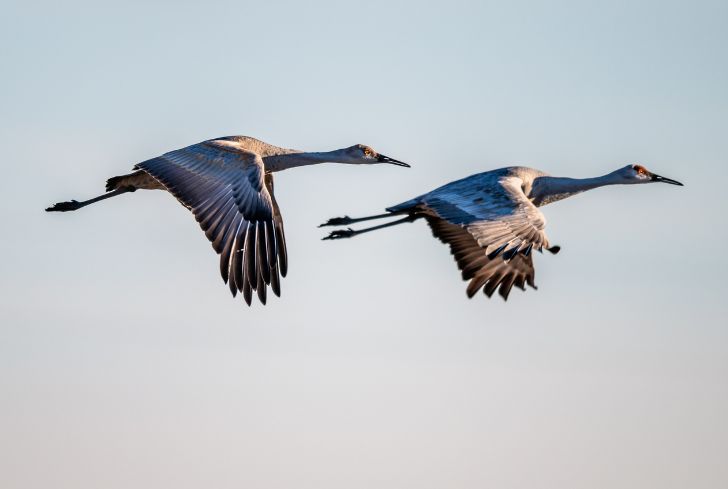
The Sandhill Crane is a large bird that is native to North America. It is a common sight in California, particularly in the Central Valley. Here are some interesting facts about this majestic bird:
- The Sandhill Crane stands at about 4-5 feet tall and has a wingspan of around 6-7 feet.
- It has a distinctive red patch on its forehead and a long, pointed bill.
- The Sandhill Crane is known for its distinctive call, which can be heard from up to two miles away.
- They are omnivorous and feed on a variety of foods, including insects, rodents, and small mammals.
- Their breeding season begins in March and they typically lay two eggs in a nest made of grass and other plant materials.
The Sandhill Crane is a fascinating bird to observe in its natural habitat. If you’re lucky enough to catch a glimpse of one, take a moment to appreciate its beauty and grace.
10. Wild Turkey
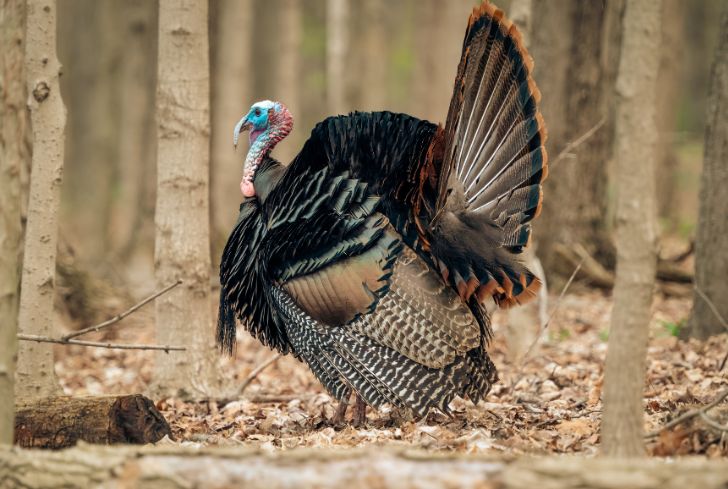
The Wild Turkey (Meleagris gallopavo) is a large bird native to North America. It is one of the most widely hunted game birds in North America and is also commonly found in urban and suburban areas. The Wild Turkey has a distinctive appearance, with a bald, red head and neck, a long, fan-shaped tail, and a body covered in iridescent feathers.
Wild Turkeys are primarily ground-dwelling birds, but they can fly short distances to escape predators or to roost in trees at night. They are omnivores, feeding on a variety of plant and animal matter, including seeds, fruits, insects, and small animals.
In California, Wild Turkeys are found throughout the state, with populations concentrated in the Sierra Nevada foothills and the coastal ranges. They are often seen in oak woodlands and grasslands, but can also be found in suburban areas with suitable habitat.
| Scientific Name | Meleagris gallopavo |
|---|---|
| Size | Up to 4 feet tall, with a wingspan of up to 5 feet |
| Habitat | Oak woodlands, grasslands, and suburban areas |
| Diet | Seeds, fruits, insects, and small animals |
| Conservation Status | Least Concern |
Wild Turkeys are an important game species in California, with hunting seasons established in many areas. They are also valued for their aesthetic and ecological contributions to the state’s natural heritage.
11. Mute Swan

The Mute Swan is a large bird that is native to Europe and Asia. It was introduced to North America as an ornamental bird in the late 1800s and has since become established in many areas, including California. Here are some key characteristics of the Mute Swan:
- Adults can weigh up to 30 pounds and have a wingspan of up to 8 feet.
- They have a distinctive orange bill with a black knob at the base.
- Their plumage is white, and they have a long, graceful neck.
Mute Swans are typically found in or near water, such as lakes, ponds, and rivers. They are often seen swimming gracefully or grazing on aquatic vegetation. They are generally not migratory but may move short distances in search of food or suitable nesting sites.
One potential issue with Mute Swans is that they can be aggressive toward other waterfowl and may compete with native species for resources. In some areas, efforts have been made to control their populations in order to protect local ecosystems.
Read: 13 Heaviest Flying Birds in the World
12. Tundra Swan

The Tundra Swan is a large bird that is commonly found in California during the winter months. These birds are known for their distinctive white plumage and black bills, which make them easy to spot in the wild. Here are some interesting facts about the Tundra Swan:
- Tundra Swans are one of the largest waterfowl species in North America, with a wingspan of up to 6 feet.
- These birds are migratory, and spend their summers breeding in the Arctic tundra before flying south to spend the winter in California.
- The Tundra Swan is known for its distinctive honking call, which can be heard from quite a distance away.
- These birds are herbivores, and feed primarily on aquatic plants and grasses.
- Tundra Swans mate for life, and typically lay 3-5 eggs per clutch.
If you’re interested in seeing Tundra Swans in California, head to the Sacramento National Wildlife Refuge or the Colusa National Wildlife Refuge. These areas are known to be popular wintering spots for these beautiful birds.
Conclusion
California is home to a variety of big birds, from the majestic bald eagle to the colorful great blue heron. Each of these birds plays an important role in the state’s ecosystem and adds to its natural beauty. Whether you’re a bird enthusiast or just someone who appreciates the outdoors, California offers plenty of opportunities to see these magnificent creatures in action.

